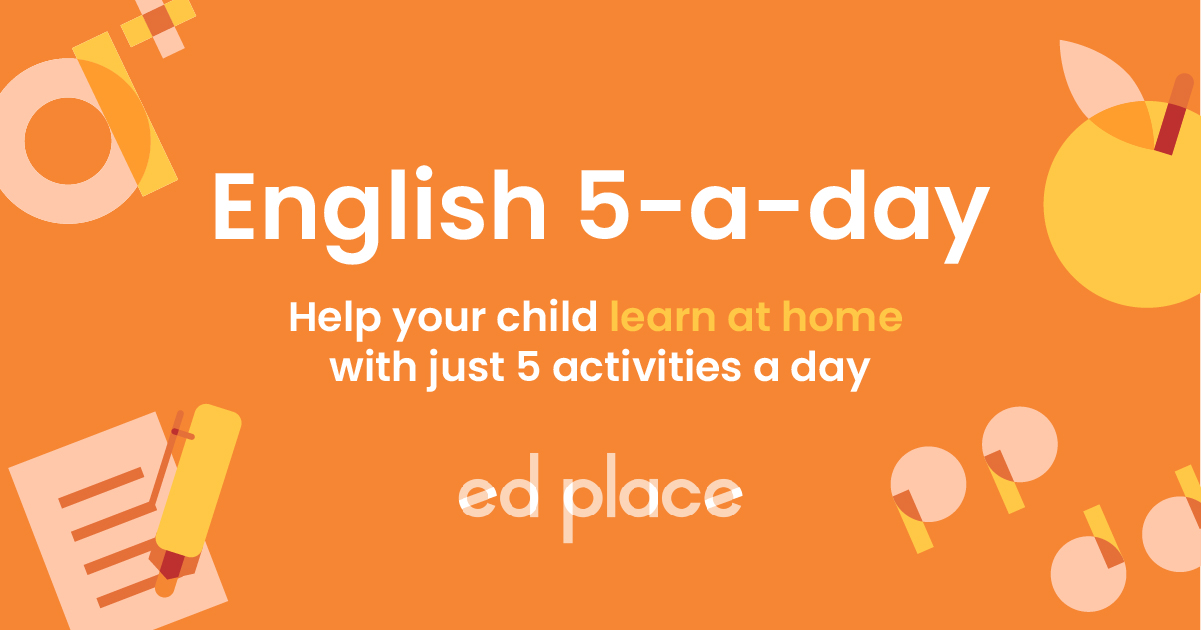
EdPlace's GCSE home learning English Language lesson: Analysing Structure in Fiction and Non-fiction texts
Looking for short lessons to keep your child engaged and learning? Our experienced team of teachers have created English, maths and science lessons for the home, so your child can learn no matter where they are. And, as all activities are self-marked, you really can encourage your child to be an independent learner.
Get them started on the lesson below and then jump into our teacher-created activities to practice what they've learnt. We've recommended five to ensure they feel secure in their knowledge - 5-a-day helps keeps the learning loss at bay (or so we think!).
Are they keen to start practising straight away? Head to the bottom of the page to find the activities.
Now...onto the lesson!
Want to ace structural analysis for your English Language exam?
‘How has the writer structured the text to interest you as a reader?’ This is a tricky one. How do you help out your frustrated teenager when you haven’t the foggiest idea how to approach this question yourself? Well, let us take some of that frustration out of your hands. At EdPlace, we’ve developed an easy step by step guide to take the hassle and head-scratching out of your hands and make your life a little easier in these times of home-schooling chaos.
Every lesson has a purpose and objective. We’re confident that by the end of this, your child will be able to:
1) Understand what is being asked of a student tackling a structure-based comprehension question
2) Develop knowledge of how to comment on and analyse a writer's use of structure
3) Explain how a writer's chosen structural technique is used to capture the reader
Step 1: How do we analyse structure in a text?
There are a number of steps a student will need to take when approaching a structure analysis question. We've broken down each step students will need to follow so that they're able to provide their most comprehensive answer. Imagine you are asked to analyse how the writer has used structure. It's a little bit daunting... but working logically can really help!
1. First, underline the focus of the question - make sure the points you make link back to this. Keep referring back to the question in your response (‘the writer structures the text…', 'this would interest the reader because…’).
2. Consider:
a) What happens at the beginning of the extract? Why does the writer start it like this? What is the effect?
b) What does the focus shift to in the middle of the extract as the extract develops? Why? What is the impact of this? What is the effect on the atmosphere, pace or tone?
c) What happens at the end of the extract? What is the effect of this? What is the impact on the reader?
3. Use structure terminology (shifts, focus, develops, repeats, pattern, contrast, narrative pace, foreshadows).
4. It’s useful to picture the section as if you were watching it. Ask yourself: How does the scene change through the extract?
5. Think about the setting and characters: Does the extract start inside/outside? Are there characters present? When and how are they introduced? Is there a similarity with how the extract starts and finishes (this could be referred to as a cyclical structure as it starts and ends in a similar format.
Step 2: 7 Key Features to Look For...
It's crucial that students are able to identify a range of structural features in any given text to then discuss in their response. There are certain features they need to be on the lookout for, understanding in which context these features pop up, and what impact they have.
1) Short sentences (often used to describe fast-paced action or to highlight a particular idea)
2) Longer sentences (used for lengthy descriptions, vivid imagery or to depict an ongoing moment of action)
3) Paragraphs – short or long (have a similar effect as sentence structure. Can create a tone of panic or ease)
4) Punctuation - (e.g. ellipsis in dialogue may suggest that a character isn't saying everything that is on their mind)
5) Characters - (what descriptions are there? What can we infer about their qualities, Do we like them?)
6) Dialogue - (what do they say? What language do they use? Is this chosen for a reason?)
7) Time changes - (e.g. Flashbacks or flashforwards, a change in location, a move from interior to the exterior or vice versa)
Step 3: Forming your response
When planning your response it's useful to note that saying a lot about a little in your answer is a great idea! Deep, 'close up' analysis generally equates to a higher grade. A sophisticated answer also needs to flow, so below, you'll find some useful phrases to use as sentence starters in your response. Why not make a note of these and try to include them in your work
Firstly, the writer focuses on…
The focus then shifts to…
The writer repeats the idea of…
The narrative pace increases when…
The writer is foreshadowing…
This is effective because…
This makes the reader feel…
This emphasises to the reader…
This interests the reader because…
Always use a paragraph structure if you can. A couple of popular acronyms that help are P.E.E.D – Point, Evidence, Explain Develop and P.E.T.E.R – Point, Evidence, Technique, Explain, Reader.
Step 4: Having a go…
Now it's time to put all these steps into practice and attempt to answer your own exam-style question! To recap: you need to underline the focus of the question, pinpoint key structural features in the passage, taking time to consider how they impact the tone of the passage and reader. And, form your response with clear sentence starters and P.E.E.D paragraphs.
Question: How has the writer structured the start of the text to interest you as a reader?
"Marley was dead: to begin with. There is no doubt whatever about that. The register of his burial was signed by the clergyman, the clerk, the undertaker, and the chief mourner. Scrooge signed it: and Scrooge’s name was good upon ’Change, for anything he chose to put his hand to. Old Marley was as dead as a door-nail."
'A Christmas Carol' by Charles Dickens
Step 5: Activities
Here are some great activities to practise your structural analysis skills!
All activities are created by teachers and automatically marked. Plus, with an EdPlace subscription, we can automatically progress your child at a level that's right for them. Sending you progress reports along the way so you can track and measure progress, together - brilliant!
Activity 1 - Reading Fiction: 'The Tell-Tale Heart'
Activity 2 - Reading Non-Fiction: Pirate Visit
Activity 3 - Reading Non-Fiction: Dogs and Cats
Activity 4 - Reading Non-Fiction: Cloud Land
Activity 5 - Reading Non-Fiction: Comparing Book Excerpts
Answer
Example answer:
First, at the start of the extract, the writer focuses on informing the reader that a character in the novel is “dead.” The statement and short sentence “Marley was dead: to begin with.” clearly informs the reader that this character has deceased prior to the start of the story. However, the explanation used “to begin with” hints that the character: “Marley” will return at some point later on. This interests the reader as it infers and foreshadows that the only way this character can return would be in a supernatural form. The reader would feel intrigued to know how the character will be re-established later in the novel.








